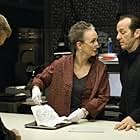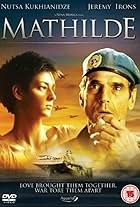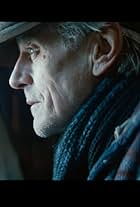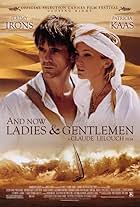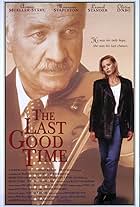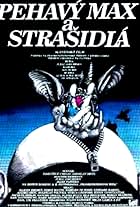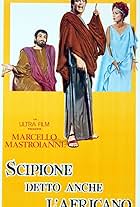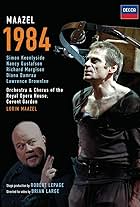Biopic of American artist Georgia O'Keeffe and her husband, photographer Alfred Stieglitz.Biopic of American artist Georgia O'Keeffe and her husband, photographer Alfred Stieglitz.Biopic of American artist Georgia O'Keeffe and her husband, photographer Alfred Stieglitz.
- Nominated for 9 Primetime Emmys
- 1 win & 28 nominations total
- Director
- Writer
- All cast & crew
- Production, box office & more at IMDbPro
Featured reviews
Before seeing this movie, whenever I thought of Georgia O'Keefe I pictured this older woman in a studio in Santa Fe painting flowers and stunning landscapes. This movie finally got to my stereotypical image but it filled in details of O'Keefe's rich, varied, long life along the way.
O'Keefe's work had attracted the attention of famed photographer and art dealer Alfred Stieglitz who exhibited some of her work in New York in 1916. A couple of years later O'Keefe moved to New York and the professional relationship with Stieglitz, who was over twenty years older than her, ultimately turned into a personal one resulting in marriage in 1924.
I always have some reservations about how truthful a biographical picture is, particularly in a case like this where, at the time the screenplay was written, O'Keefe had been dead for over twenty years and most of the people in her life had been dead for upward of fifty years. For example, what are we to take away from the scene about the argument that O'Keefe had with Stieglitz regarding her wanting a child and his blunt refusal? Is that pure speculation? Giving it the benefit of the doubt, I assume the general sweep of her life as presented is accurate, and indeed reading the Wikipedia entry for O'Keefe seems to bear this out. For movies based on a true story I often ask myself why not just read the appropriate Wikipedia entry and skip the movie. But, if properly done, it is easier to get involved in a movie and come away with more lasting impressions. It is often the case that a good movie based on a true story, as this one, will prompt me to do some independent research. There is no lack of O'Keefe biographies, video, and art books out there.
In looking at some of the images of O'Keefe, Stieglitz, and Mabel Dodge, the actors playing those parts (Joan Allen, Jeremy Irons, and Tyne Daly) are well cast as to physical appearance and all do good work.
I wish more of O'Keefe's paintings had been tightly woven into the story.
O'Keefe's work had attracted the attention of famed photographer and art dealer Alfred Stieglitz who exhibited some of her work in New York in 1916. A couple of years later O'Keefe moved to New York and the professional relationship with Stieglitz, who was over twenty years older than her, ultimately turned into a personal one resulting in marriage in 1924.
I always have some reservations about how truthful a biographical picture is, particularly in a case like this where, at the time the screenplay was written, O'Keefe had been dead for over twenty years and most of the people in her life had been dead for upward of fifty years. For example, what are we to take away from the scene about the argument that O'Keefe had with Stieglitz regarding her wanting a child and his blunt refusal? Is that pure speculation? Giving it the benefit of the doubt, I assume the general sweep of her life as presented is accurate, and indeed reading the Wikipedia entry for O'Keefe seems to bear this out. For movies based on a true story I often ask myself why not just read the appropriate Wikipedia entry and skip the movie. But, if properly done, it is easier to get involved in a movie and come away with more lasting impressions. It is often the case that a good movie based on a true story, as this one, will prompt me to do some independent research. There is no lack of O'Keefe biographies, video, and art books out there.
In looking at some of the images of O'Keefe, Stieglitz, and Mabel Dodge, the actors playing those parts (Joan Allen, Jeremy Irons, and Tyne Daly) are well cast as to physical appearance and all do good work.
I wish more of O'Keefe's paintings had been tightly woven into the story.
I have followed Stieglitz for 40 years via catalogs, books, videos, and exhibitions. I branched out to adore O'Keefe for her work, and, increasingly for her individuality and spunk.
This portrayal of the woman fills a much needed gap in her biography and that of Alfred. The harmonies played by the character weave a phenomenal presentation of these lives.
For anyone who has read biographies, autobiographies, or other papers on these two lives will easily fill the gaps in this abbreviated portrayal. If I get the chance this program will become a part of my own collection of these artists lives - It's a keeper.
This portrayal of the woman fills a much needed gap in her biography and that of Alfred. The harmonies played by the character weave a phenomenal presentation of these lives.
For anyone who has read biographies, autobiographies, or other papers on these two lives will easily fill the gaps in this abbreviated portrayal. If I get the chance this program will become a part of my own collection of these artists lives - It's a keeper.
Don't get me wrong, Allen and Irons are quite good in the film. (Irons seems to be channeling Daniel Plainview) Im just a little disappointed...
I personally would have liked to see her actually painting a bit more...or at least some insight to her thought process. The plot is really about her seemingly symbiotic relationship with Alfred Stiglitz.
There also seems to be a lot of gray areas in her later life that the film just sums up in a monologue, but Its a made for T.V movie...I guess we cant have everything. Something tells me it should (was it meant to be?) have been made into a feature. Its not bad, just could have been better.
I personally would have liked to see her actually painting a bit more...or at least some insight to her thought process. The plot is really about her seemingly symbiotic relationship with Alfred Stiglitz.
There also seems to be a lot of gray areas in her later life that the film just sums up in a monologue, but Its a made for T.V movie...I guess we cant have everything. Something tells me it should (was it meant to be?) have been made into a feature. Its not bad, just could have been better.
Let me first state that I am a professor of Art history so my opinion should carry some weight. Having said that, the actual story of O'Keeffe and Stieglitz is told rather faithfully. My complaint stems from the sloppy production. The opening scene sets the tone: New York 1916 is actually Chicago 2009! You can see the flag of Chicago hanging on one of the buildings! Also O'Keeffe was not in New York until 1918. The cars, hats and hemlines are all from the '20s (like we wouldn't notice).
The second time we see "New York " it's the Chicago Board of Trade complete with the Rookery on the left! Lazy, sloppy production. You couldn't find any stock footage of NYC?
The second time we see "New York " it's the Chicago Board of Trade complete with the Rookery on the left! Lazy, sloppy production. You couldn't find any stock footage of NYC?
About a year ago, when the cast was announced for this film, much flurry was made about Henry Simmons playing the role of writer Jean Toomer, the third point in the crucial triangle that really led Georgia O'Keeffe to decide to stay away from Stieglitz.
Imagine the unexpected disappointment when in the broadcast film, Simmons as Toomer was stifled to not a single honest line of dialog! He is reduced to mention in an insane and inaccurate tirade by Stieglitz as "the Black Prince of Harlem" many decades before Malcolm X (to whom the epithet rightly belongs) was born. And these lines sound quite unworthy of a writer the caliber of Cristofer.
Not only was Toomer, a man of mixed race, hardly in Harlem, but he spent most of his life fighting against being classified as a "Negro writer." Then, even more surprisingly, scenes between O'Keeffe and Toomer show up on the Lifetime website and comprise the great majority of what was omitted from the final presentation -- scenes that could shed quite a different light on her choices about remaining in New Mexico.
Obviously, some effort was made to make Joan Allen and Jeremy Irons look like their historical subjects. Simmons does not look like Toomer at all. At least in the old American Playhouse version of the story Vernal Bagneris makes a credible representative.
Moreover, the finished quality of the omitted scenes belies a late cut. It would certainly be interesting to learn something more for the production record, even if not to abate the unanimous canning by the critics. Toomer's disappearing act is one of the major reasons the film failed.
Imagine the unexpected disappointment when in the broadcast film, Simmons as Toomer was stifled to not a single honest line of dialog! He is reduced to mention in an insane and inaccurate tirade by Stieglitz as "the Black Prince of Harlem" many decades before Malcolm X (to whom the epithet rightly belongs) was born. And these lines sound quite unworthy of a writer the caliber of Cristofer.
Not only was Toomer, a man of mixed race, hardly in Harlem, but he spent most of his life fighting against being classified as a "Negro writer." Then, even more surprisingly, scenes between O'Keeffe and Toomer show up on the Lifetime website and comprise the great majority of what was omitted from the final presentation -- scenes that could shed quite a different light on her choices about remaining in New Mexico.
Obviously, some effort was made to make Joan Allen and Jeremy Irons look like their historical subjects. Simmons does not look like Toomer at all. At least in the old American Playhouse version of the story Vernal Bagneris makes a credible representative.
Moreover, the finished quality of the omitted scenes belies a late cut. It would certainly be interesting to learn something more for the production record, even if not to abate the unanimous canning by the critics. Toomer's disappearing act is one of the major reasons the film failed.
Did you know
- TriviaOn November 15th, Joan Allen threw a birthday party for Georgia O'Keeffe at her house in Santa Fe for the cast and producers and crew and even had a birthday cake with candles. The next day was the first day of principal photography.
- GoofsPart of this movie was filmed at Ghost Ranch in New Mexico. When Georgia walks out of the house in the morning she is barefoot. This would never happen in real life due to scorpions, fire ants, Cholla cactus thorns, tumbleweed thorns, and a plant called goat's-head weed. This plant has woody thorns that give the plant its nickname of puncturevine.
- ConnectionsFeatured in The 62nd Primetime Emmy Awards (2010)
Details
- Runtime1 hour 29 minutes
- Color
- Sound mix
- Aspect ratio
- 1.78 : 1
Contribute to this page
Suggest an edit or add missing content












